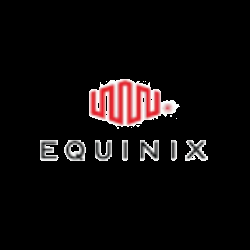Equinix is positioned strongly in the market with a resilient business model and a focus on interconnection density. While there are challenges in capacity constraints, the company's proactive approach to future growth, particularly in AI and global expansion, suggests promising prospects ahead.
Analysis Date: February 12, 2025
Last Updated: March 12, 2025
Trailing Twelve Months (TTM) values provide a view of the company's performance over the last year.
Graham Value Metrics
Benjamin Graham's value investing approach focuses on finding stocks with a significant margin of safety between their intrinsic value and market price.
Intrinsic Value
Estimated fair value based on Graham's formula
$323.98
Current Market Price: $770.03
IV/P Ratio: 0.42x (>1.0 indicates undervalued)
Margin of Safety
Gap between intrinsic value and market price
-138.0%
Graham recommended a minimum of 20-30% margin of safety
Higher values indicate a greater potential discount to fair value
ROE: 6.3064631574874745
ROA: -0.03990309248966795
Gross Profit Margin: 48.93689986282579
Net Profit Margin: 9.316415180612712
Trailing Twelve Months (TTM) values provide a view of the company's performance over the last year.
Strong Operating Profit Margin
15.03%
Operating Profit Margin
The operating profit margin of 15.03% reflects the company's effective cost management and ability to convert sales into operating income.
Decent Return on Equity
The return on equity (ROE) stands at 6.31%, indicating that the company is generating a reasonable return on shareholders' equity.
Low Net Profit Margin
The net profit margin of 9.32% suggests that while the company is profitable, there may be room for improvement in converting revenue to net income.
About Profitability Metrics
Profitability metrics measure a company's ability to generate earnings relative to its revenue, operating costs, and other relevant metrics. Higher values generally indicate better performance.
Return on Equity (ROE)
Measures how efficiently a company uses its equity to generate profits
6.31%
10%
15%
Higher values indicate better returns for shareholders
TTM (as of 2025-04-16)
Return on Assets (ROA)
Measures how efficiently a company uses its assets to generate profits
-0.04%
3%
7%
Higher values indicate better asset utilization
TTM (as of 2025-04-16)
Gross Profit Margin
Percentage of revenue retained after accounting for cost of goods sold
48.94%
20%
40%
Higher values indicate better efficiency in production
TTM (as of 2025-04-16)
Net Profit Margin
Percentage of revenue retained after accounting for all expenses
9.32%
8%
15%
Higher values indicate better overall profitability
TTM (as of 2025-04-16)
Strong Liquidity Ratios
With a current ratio of 1.63 and a quick ratio of 1.63, EQIX demonstrates good liquidity, indicating it can cover short-term liabilities effectively.
High Debt Levels
1.24
Debt-to-Equity Ratio
47.83%
Debt-to-Assets Ratio
The debt-to-equity ratio of 1.24 and debt-to-assets ratio of 47.83% signal that the company has a relatively high level of debt, which could pose risks in a rising interest rate environment.
About Financial Health Metrics
Financial health metrics assess a company's ability to meet its financial obligations and its overall financial stability.
Debt to Equity Ratio
Total debt divided by total equity
1.24x
1.0x
2.0x
Lower values indicate less financial leverage and risk
Less than 1.0 is conservative, 1.0-2.0 is moderate, >2.0 indicates high risk
Q4 2024
Current Ratio
Current assets divided by current liabilities
1.63x
1.0x
2.0x
Higher values indicate better short-term liquidity
Less than 1.0 is concerning, 1.0-2.0 is adequate, greater than 2.0 is good
Q4 2024


